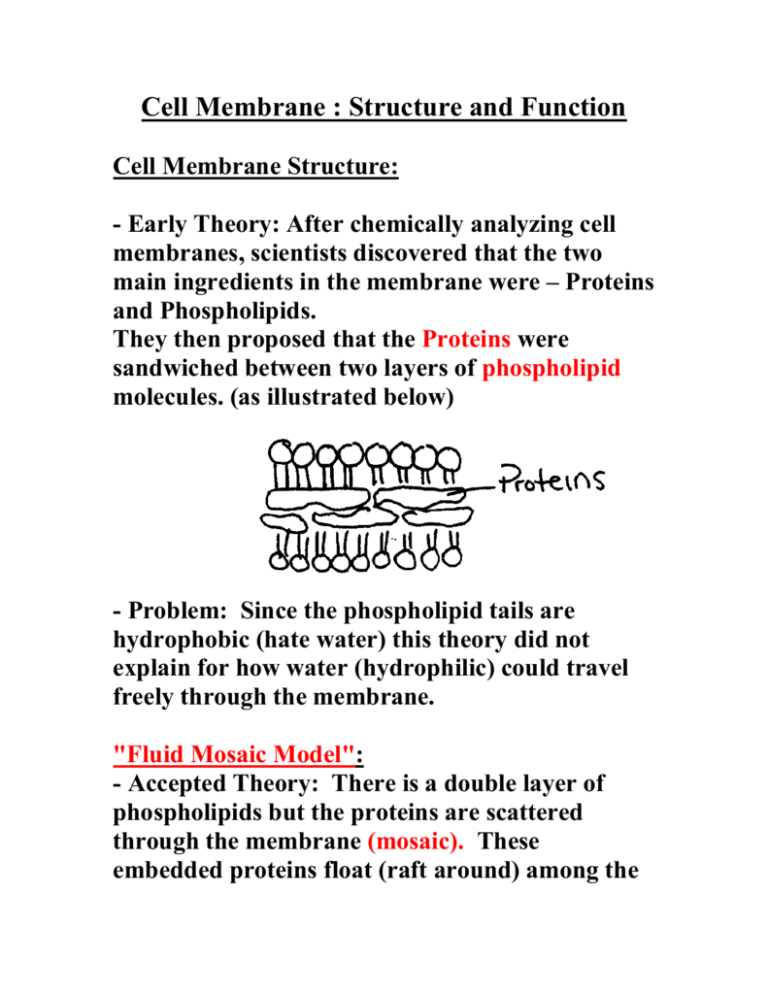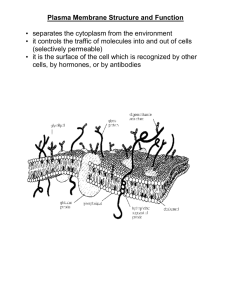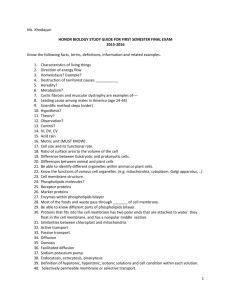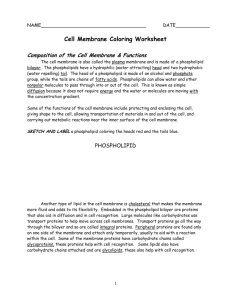Cell Membrane Structure & Function: Fluid Mosaic Model
advertisement

Cell Membrane : Structure and Function Cell Membrane Structure: - Early Theory: After chemically analyzing cell membranes, scientists discovered that the two main ingredients in the membrane were – Proteins and Phospholipids. They then proposed that the Proteins were sandwiched between two layers of phospholipid molecules. (as illustrated below) - Problem: Since the phospholipid tails are hydrophobic (hate water) this theory did not explain for how water (hydrophilic) could travel freely through the membrane. "Fluid Mosaic Model": - Accepted Theory: There is a double layer of phospholipids but the proteins are scattered through the membrane (mosaic). These embedded proteins float (raft around) among the semi-fluid phospholipids (fluid). Many of these embedded proteins (seen in brown below) span from one side of the membrane straight through to the other. - Water travels through special protein pores called Aquaporins. The proteins have polar and non-polar regions from the amino acid R-Groups, which accounts for their placement among the phospholipid bilayer. R-groups that are hydrophobic point toward the fatty acid chains while R-groups that are hydrophilic point toward the inner channel where water flows through. - Some of the proteins and phospholipids have carbohydrate chains attached to them. - Protein + carbohydrate chain = Glycoprotein - Phospholipid + Carbohydrate chain = Glycolipid - These carbohydrate chains function as cell identification markers. Forming somewhat of a fingerprint on the outside of the cell. A body will attack cells with the wrong fingerprint (like a foreign cell, cancer cell, or infected cell) Example: Organ rejection after a transplant. Cell Membrane Function: - Impermeable – nothing passes through - Permeable – most things pass through - Semi-permeable – smaller molecules pass through but not larger ones. Like a Strainer/Sieve - The cell membrane is described as being SELECTIVELY PERMEABLE (differentially permeable)-- only certain desirable molecules can pass through, size is not the determining factor. The membrane has mechanisms to allow for the transport of various types of desirable molecules. Example : Protein molecules are too large to fit through the various protein pores, but they can be transported across the membrane with vesicle formation.











